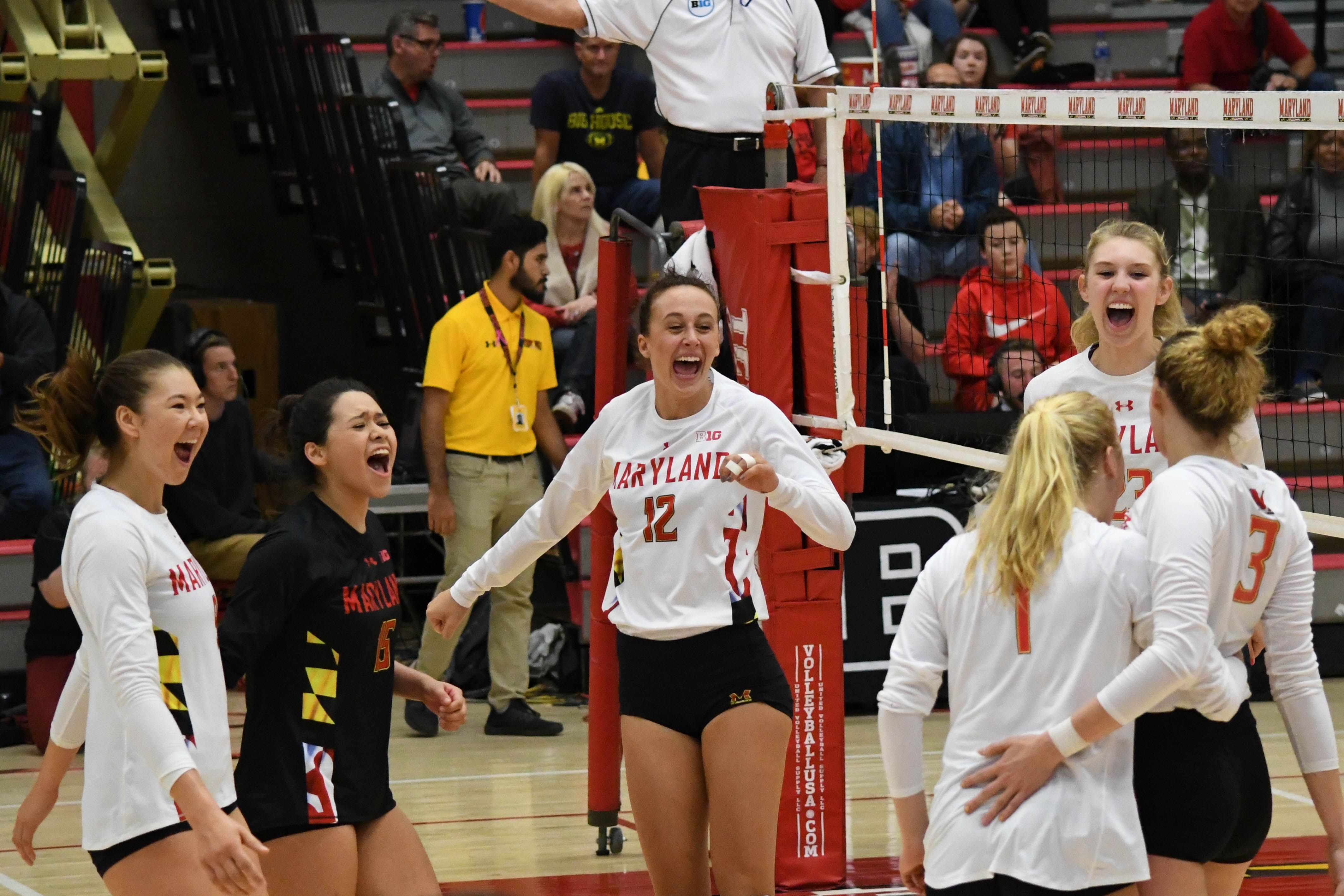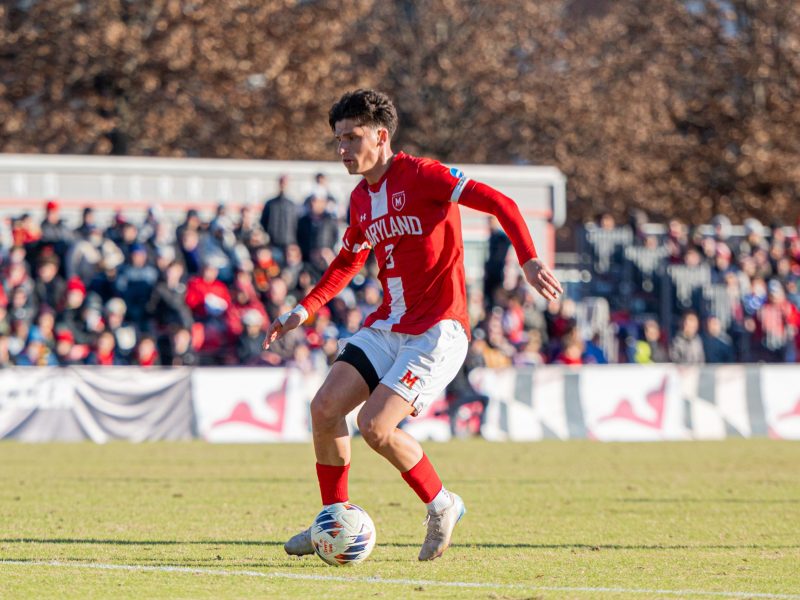On paper, Maryland volleyball’s 2017 and 2018 squads were almost identical. Both teams went 18-14 and both were among the first four teams left out of the NCAA tournament field.
The paths the two teams took, however, couldn’t have been more different.
The 2017 Terps were a program on the rise, with head coach Steve Aird moving the team toward competitiveness in the brutal Big Ten. Entering 2018, Maryland had lost its coach and its top hitter, and was projected to finish 13th in the conference.
But coach Adam Hughes defied the odds in his first year as a head coach, bringing the Terps to the doorstep of postseason play just as his predecessor had.
“They put out some lofty goals this year that a lot of people would have said weren’t possible,” Hughes said. “We were picked to finish second-to-last in the conference, and I think it’s a testament to their will and how much they’ve worked together to get where they are.”
[Read more: Maryland volleyball decisively swept by No. 6 Nebraska in final regular season game]
Maryland started the season strong, going 9-3 in nonconference play, with all three losses coming in five sets. The Terps then won three of their first six conference matches before dropping three straight, including their only unranked conference loss, at home to Michigan State.
The loss dropped Maryland to 1-4 in five-set matches. While the young squad had shown promise from the outset of the season, coming up in the clutch was an area of concern early.
The Terps played their best volleyball in the last month of the season, sweeping No. 15 Michigan in Ann Arbor for the program’s first ever road win over a ranked opponent and taking a set at home from No. 3 Minnesota.
In Aird’s absence, fewer fans came to games. The average attendance for Maryland’s home matches dropped from 1,364 in 2017 — including five matches played in the main Xfinity Center gym as opposed to the Pavilion — to 820 this year. The latter figure is buoyed by a Pavilion record 1,848 fans in attendance for the final home match against No. 7 Wisconsin.
“We like to play here. It’s a tough place to play,” Hughes said. “It’s a gym that last year we had some success being at home, and we want to try to continue that.”
[Read more: Maryland volleyball just misses NCAA tournament, extending postseason drought to 13 years]
While a win earlier in the year could have changed the Terps’ postseason fate, Hughes said that he does not regret the early-season trials his team went through.
“A lot of times, you just have to go through the experience so you learn,” Hughes said. “If we don’t go through those moments at the beginning of the season, then maybe we aren’t where we are now.”
Maryland’s offense took a hit with the transfer of top hitter Gia Milana to Baylor, but the Terps stayed afloat thanks to the emergence of outside hitter Erika Pritchard. Pritchard totaled 493 kills on 1,335 attacks in her sophomore season, both second-most in program history. The breakout performance earned her first-team all-Big Ten honors.
The returning talent was aided by a skilled crop of newcomers. Setter Nicole Alford, who transferred from Georgia Tech, ranked ninth in the conference with 9.8 assists per set. Freshman libero Allegra Rivas was a three-time Big Ten defensive player of the week, and freshman middle blocker Rainelle Jones eclipsed triple-digit kills and blocks.
“They did a really good job of embracing the people that came into the locker room,” Hughes said. “When we got started in August, I thought this group could be special.”
While the Terps didn’t face any ranked nonconference opponents, they went through the ringer in conference play, playing 11 matches against Big Ten teams.
The Terps only graduate two players this offseason, and return all six players who appeared in every set this year.
While the season ended earlier than they hoped, Hughes stressed to his players that he felt positive about their season and commended them for their mental toughness.
“They faced a lot of adversity and they came together,” Hughes said. “They could’ve easily turned and ran and gone the other way, but instead they looked inward and they supported each other, and that’s something I think they’ll never forget.”



